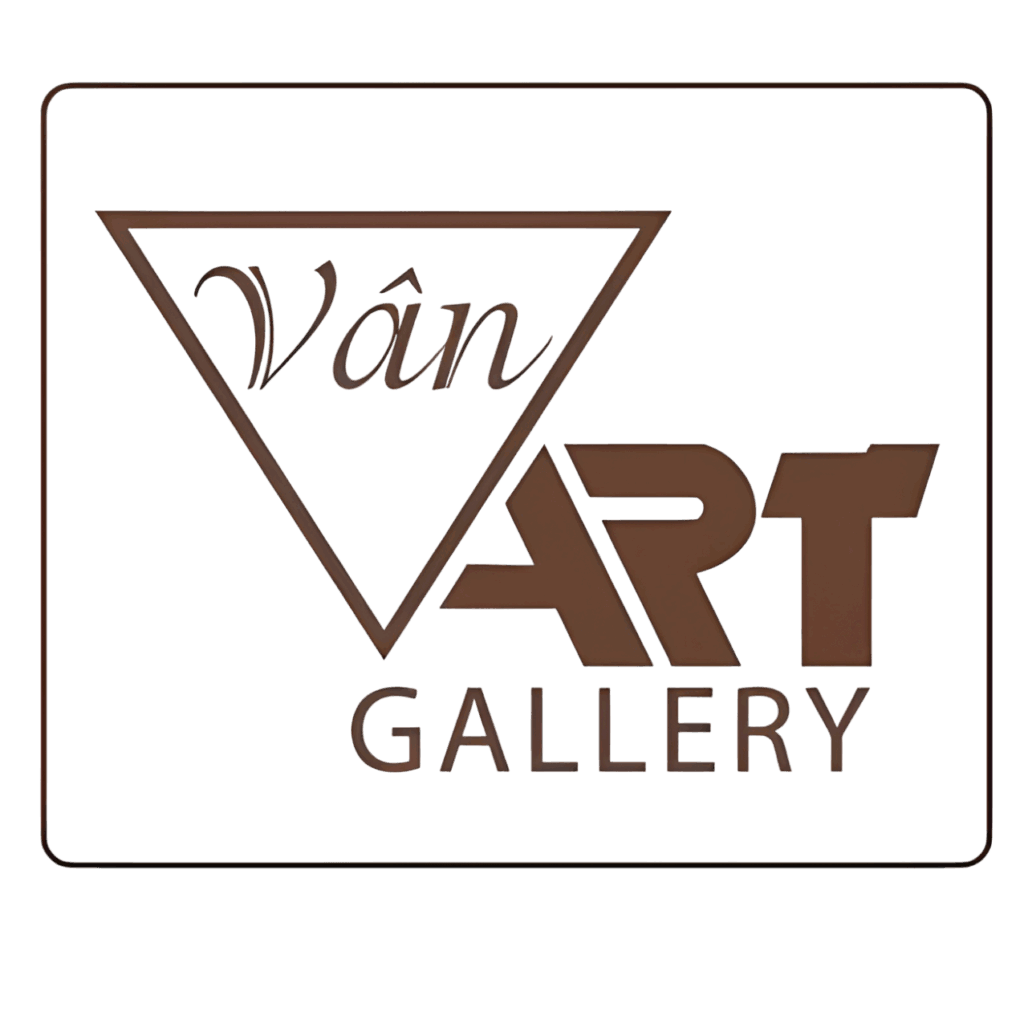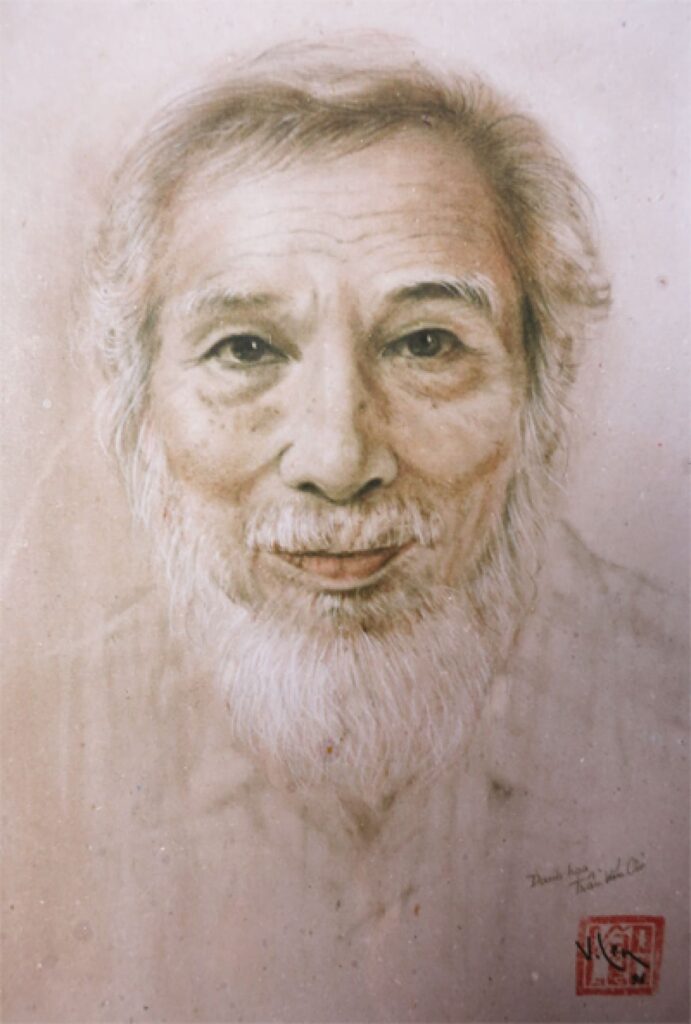Trần Văn Cẩn: A Pioneer of Vietnamese Fine Arts
Trần Văn Cẩn (1910 – 1994) stands as one of Vietnam’s most celebrated artists, revered as part of the “Fantastic Four” alongside Nguyễn Gia Trí, Tô Ngọc Vân, and Nguyễn Tường Lân. His paintings grace Vietnam art galleries as timeless masterpieces. Renowned for works like Em Thúy and his contributions to Vietnamese lacquer painting, Trần Văn Cẩn left an indelible mark on the nation’s modern art scene. This article explores his biography, iconic works, and pivotal role in shaping Vietnamese fine arts before and after the country’s liberation.
Biography of Trần Văn Cẩn
Who is Trần Văn Cẩn?
Born on August 13, 1910, in Kiến An, Hải Phòng, Trần Văn Cẩn hailed from an intellectual family. According to the Vietnam Fine Arts Museum, he showed artistic talent from a young age, influenced by his mother, a skilled artisan of tò he (dough figurines) and paper lanterns. In 1924, he moved to Hanoi to live with his grandmother, embarking on his artistic journey.
- 1925: Enrolled in Hanoi’s Practical Industrial School, studying pattern drawing and woodworking design.
- 1930: Worked at the Nha Trang Oceanography Institute, sketching exotic fish and mastering Western painting techniques.
- 1931: Admitted to the Indochina School of Fine Arts (Course VI, 1931–1936), studying alongside Nguyễn Gia Trí and Lưu Văn Sìn.
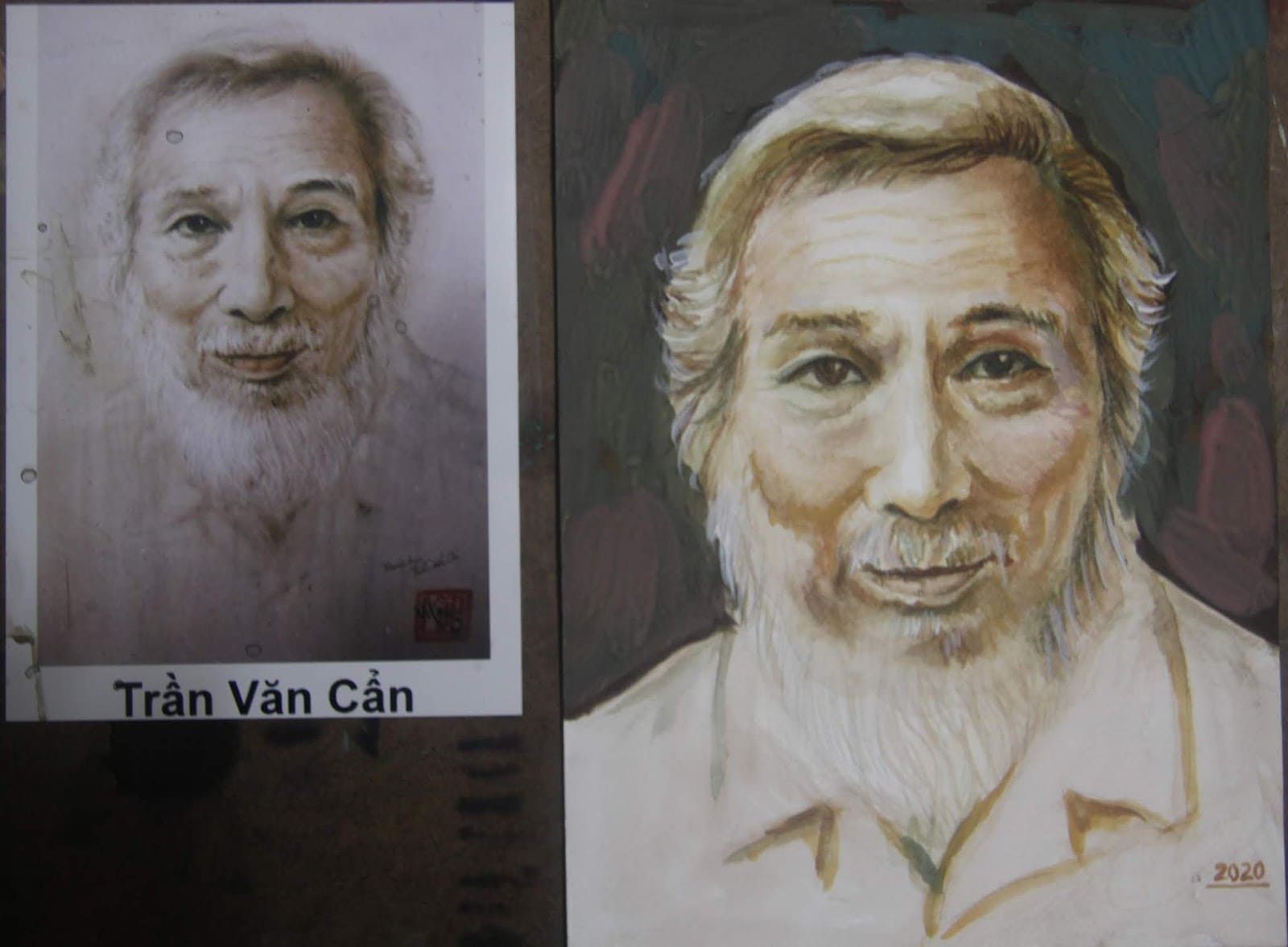
Education and Early Career
At the Indochina School of Fine Arts, Trần Văn Cẩn explored lacquer painting techniques with Lê Phổ, Phạm Hậu, and Nguyễn Khang, revolutionizing Vietnamese lacquer art. His graduation work, Lều Chõng (Lacquer, 1936), inspired by Ngô Tất Tố’s novel about scholars taking exams, earned high praise. Graduating as valedictorian, he declined a position with the colonial government to focus on his artistic creations.
“Art is my way of expressing love for my homeland and its people.” – Trần Văn Cẩn
Career of Trần Văn Cẩn
What Did Trần Văn Cẩn Contribute to Vietnamese Fine Arts?
Trần Văn Cẩn was not only an artist but also an educator and leader in the art community. His career intertwined with Vietnam’s historical milestones:
- Indochina Period (1930–1945): Participated in SADEAI and FARTA exhibitions, winning numerous awards for works like Em Thúy and Gội Đầu.
- Resistance Period (1945–1954): Created propaganda art and won first prize at the 1946 National Fine Arts Exhibition for Xuống Đồng.
- Post-Liberation (1954–1994): Served as Principal of the Vietnam College of Fine Arts (1954–1969), shaping generations of young artists.
He was elected to the Standing Committee of the Vietnam Literature and Arts Association (1948) and served as General Secretary of the Vietnam Fine Arts Association (1958–1983).
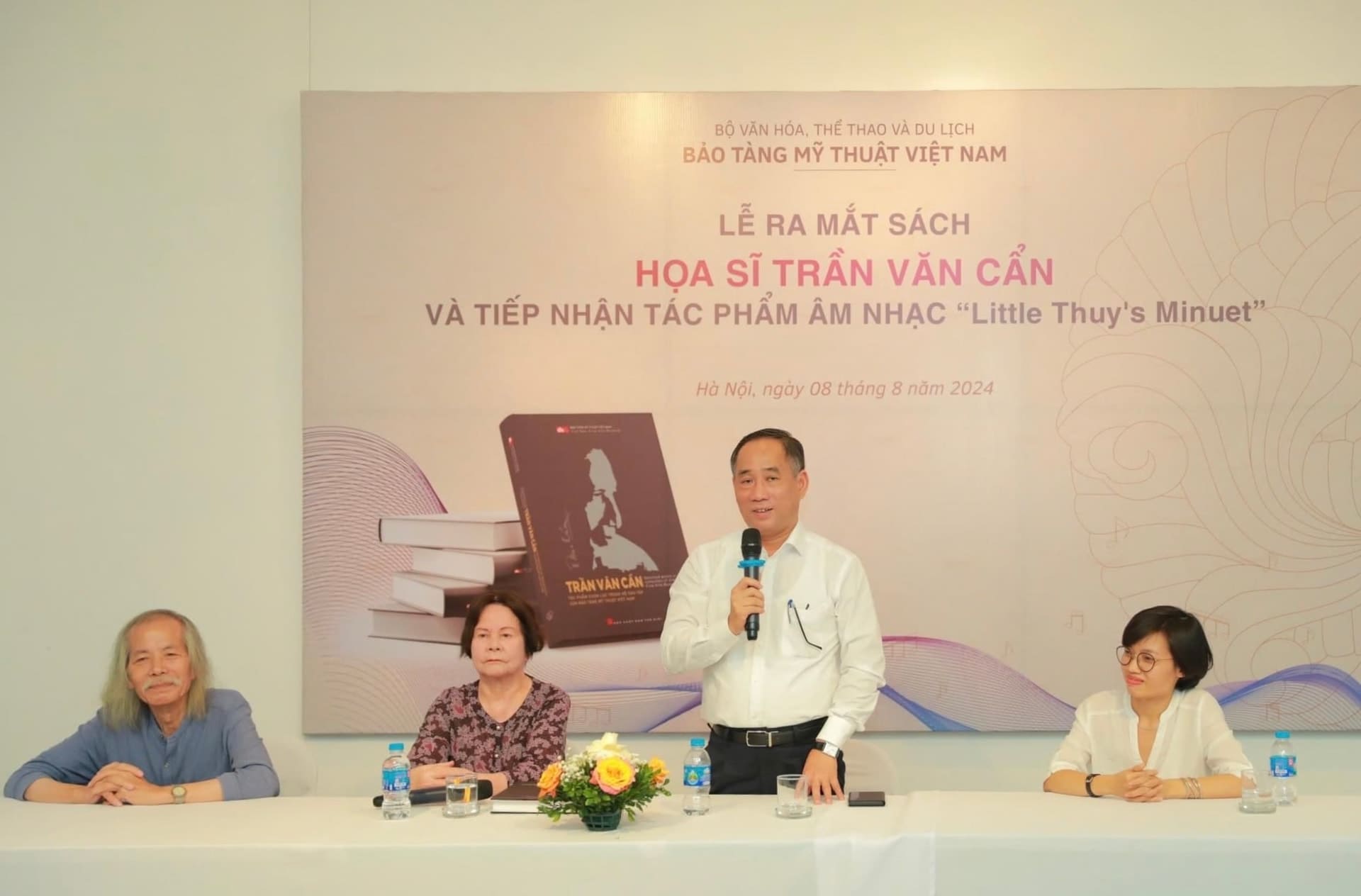
Role in Vietnamese Lacquer Painting
Trần Văn Cẩn advanced Vietnamese lacquer painting through his innovative use of traditional materials like sơn ta (natural lacquer), eggshells, and gold leaf. He transformed lacquer from a craft into a modern art form. Works like Tát Nước Đồng Chiêm and Thằng Cu Đất Mỏ showcase his mastery.
Works of Trần Văn Cẩn
What Are Trần Văn Cẩn’s Most Notable Works?
Trần Văn Cẩn’s works are cherished for blending Western techniques with Vietnamese spirit. Here are some of his iconic pieces:
-
- Em Thúy (1943, Oil on Canvas)
- Description: A portrait of his 8-year-old niece, Nguyễn Minh Thúy, seated on a rattan chair with innocent eyes.
- Significance: Recognized as a National Treasure in 2013, it captures simplicity and emotional depth.
- Features: Asymmetrical composition inspired by Henri Matisse.
- Em Thúy (1943, Oil on Canvas)
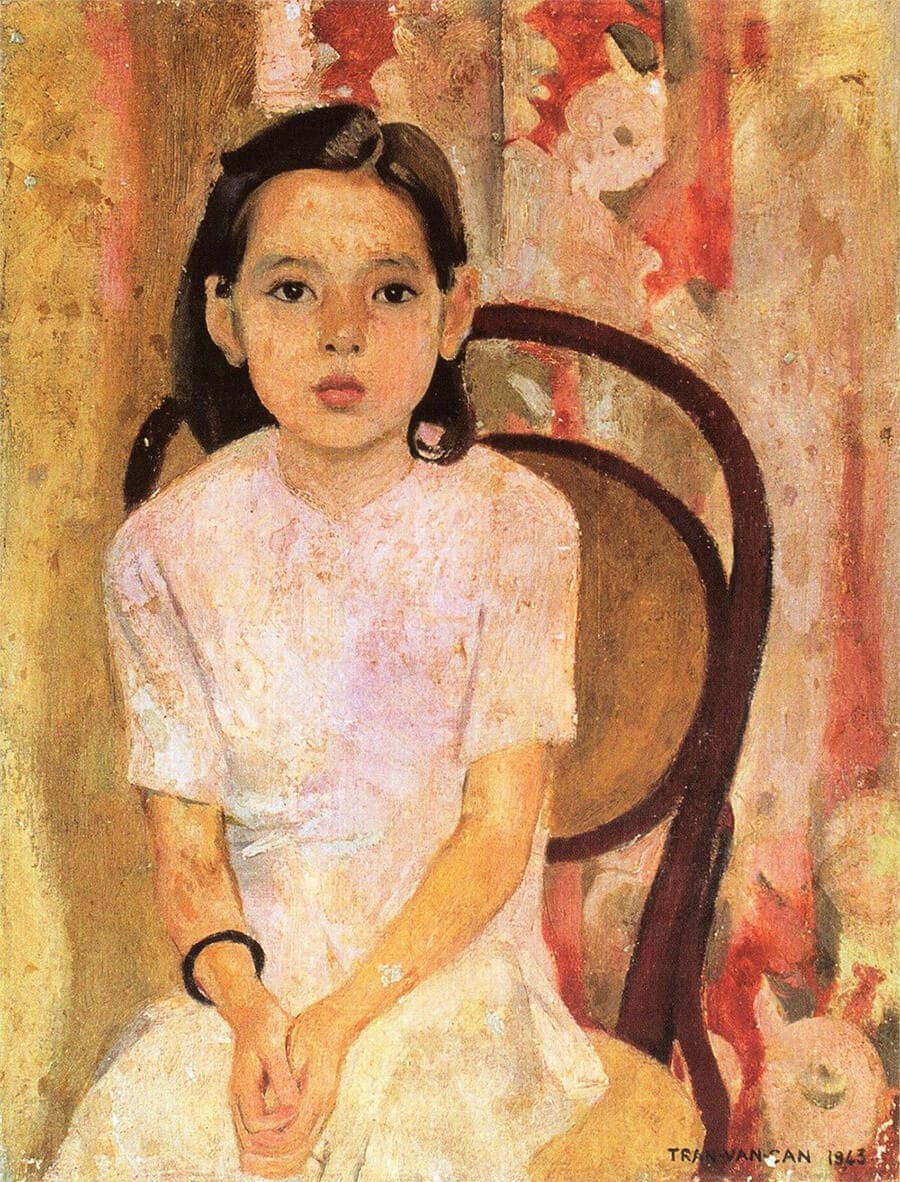
- Gội Đầu (1943, Woodblock Print)
- Description: A colored woodblock print depicting a young woman washing her hair by a river.
- Significance: Won first prize at the FARTA exhibition, showcasing his mastery of woodblock techniques.
- Xuống Đồng (1946, Silk)
- Description: A vibrant depiction of farmers working in the fields.
- Significance: Won first prize at the 1946 National Fine Arts Exhibition and was acquired by the National Culture Salvation Association.
- Tát Nước Đồng Chiêm (1958, Lacquer)
- Description: Portrays farmers irrigating fields, using innovative lacquer techniques.
- Significance: Reflects Vietnam’s rural beauty and labor spirit.
- Thằng Cu Đất Mỏ (1965, Lacquer)
- Description: A portrait of a boy from the mining region, with warm tones and realistic composition.
- Significance: Celebrates the resilience of Vietnam’s working people.
Why Do Trần Văn Cẩn’s Works Endure?
Trần Văn Cẩn’s works stand the test of time due to their technical brilliance and deep national sentiment. Art critic Thái Bá Vân noted that his paintings reflect profound inner worlds, especially during the Europeanized Indochina period. Em Thúy is often called Vietnam’s “Mona Lisa” for its simplicity and captivating charm.
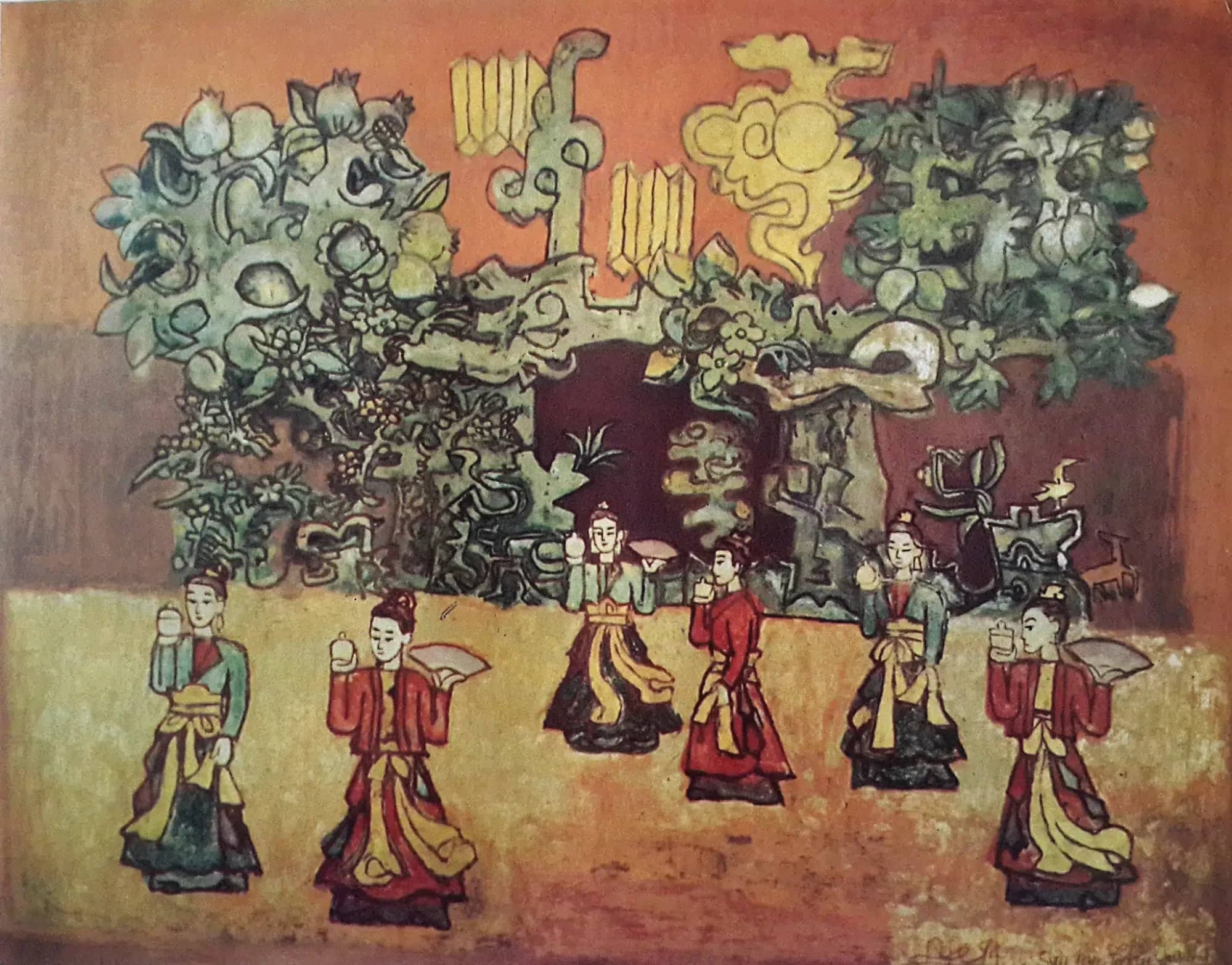
Vietnamese Fine Arts and Trần Văn Cẩn
What Defined Vietnamese Fine Arts During the Indochina Period?
The Indochina period (1925–1945) marked a fusion of Western techniques and Vietnamese identity. Trần Văn Cẩn, alongside the “Fantastic Four” (Trí, Vân, Lân, Cẩn), ushered in a golden era for modern Vietnamese art. Key characteristics include:
- Western Techniques: Use of oil, silk, and lacquer with three-dimensional compositions.
- National Themes: Depictions of Vietnamese life, from rural labor to portraits of women.
- Patriotic Spirit: Propaganda works like Trần Văn Cẩn’s Nước Việt Nam của Người Việt Nam expressed love for the homeland.
Why is Trần Văn Cẩn an Icon of Vietnamese Fine Arts?
Trần Văn Cẩn’s legacy extends beyond his creations. He mentored young artists and contributed to the design of Vietnam’s national emblem. According to Fine Arts Magazine, he is a “shining example of artistic dedication,” inspiring future generations.
Em Thúy by Trần Văn Cẩn – A Masterpiece
What Makes Em Thúy Special?
Em Thúy (1943) is one of the most iconic portraits in 20th-century Vietnamese art. Depicting his niece, Nguyễn Minh Thúy, with innocent eyes and a serene expression, the painting stands out for:
- Oil Technique: Warm colors and asymmetrical composition.
- Emotion: Captures the purity of childhood amid European influences.
- Value: Declared a National Treasure in 2013, preserved at the Vietnam Fine Arts Museum.
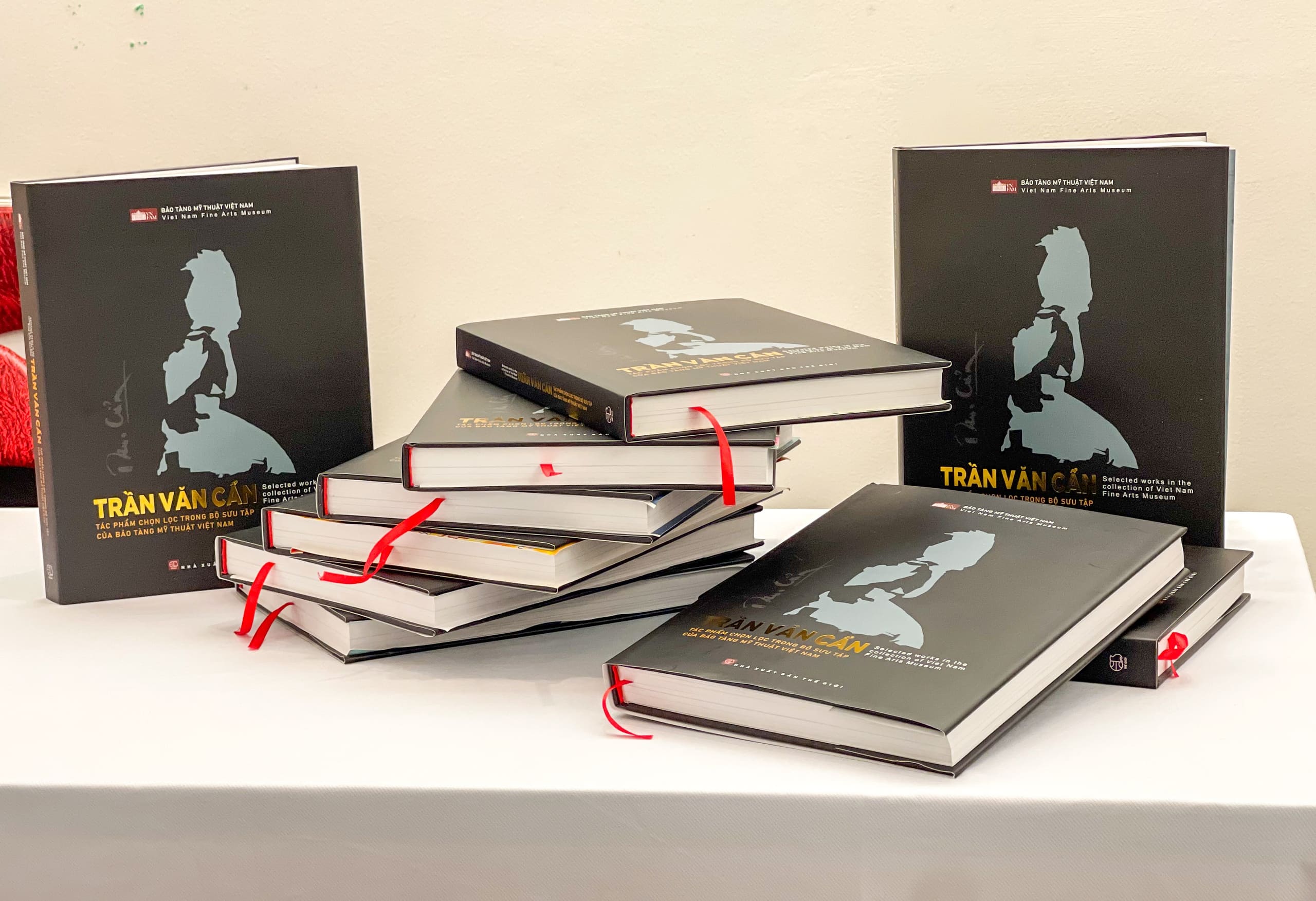
How Was Em Thúy Created?
Art restorer Caroline Fry notes that Em Thúy was painted during wartime, when Trần Văn Cẩn lived with his family on Hàng Cót Street, Hanoi. The portrait blends Western techniques with Eastern sensibilities. Though once damaged by peeling paint, it has been meticulously preserved at the Vietnam Fine Arts Museum since 1964.
Vietnamese Lacquer Painting and Trần Văn Cẩn
How Did Trần Văn Cẩn Shape Vietnamese Lacquer Painting?
Trần Văn Cẩn elevated Vietnamese lacquer painting into a distinct art form through his research into sơn ta, eggshells, and gold leaf. His works, such as:
- Lều Chõng (1936): A graduation piece depicting scholars preparing for exams.
- Tát Nước Đồng Chiêm (1958): Vibrant portrayal of rural labor.
- Mùa Thu Đan Áo (1960): A delicate depiction of a Vietnamese woman.
Why Are Trần Văn Cẩn’s Lacquer Paintings Exceptional?
His lacquer works combine traditional craftsmanship with modern artistry, creating depth and emotion. He transformed lacquer into a medium for artistic expression, distinct from its traditional craft roots.
Trần Văn Cẩn’s Influence on Vietnamese Fine Arts
How Did Trần Văn Cẩn Impact Vietnamese Art?
Trần Văn Cẩn’s legacy is profound, influencing Vietnamese art through:
- Creations: Iconic works like Em Thúy and Xuống Đồng.
- Education: Teaching at the Việt Bắc Art School and serving as Principal of the Vietnam College of Fine Arts (1954–1969).
- Leadership: Key roles in the Vietnam Fine Arts Association, evaluating works for the Vietnam Fine Arts Museum.
How to Recognize Trần Văn Cẩn’s Influence?
- Style: Blending Western techniques with Vietnamese identity.
- Legacy: His works are displayed in museums, inspiring young artists.
- Education: His students became prominent artists, carrying forward his creative spirit.
Trần Văn Cẩn is a towering figure in Vietnamese fine arts, with masterpieces like Em Thúy, Xuống Đồng, and Tát Nước Đồng Chiêm. His biography tells the story of a dedicated artist who fused Western techniques with national spirit to create timeless works. As an educator and leader, he shaped modern Vietnamese art. Explore his legacy at museums, read about the Indochina period, or try painting in his style to feel his greatness. Share this article to spread the story of this “Fantastic Four” legend!
